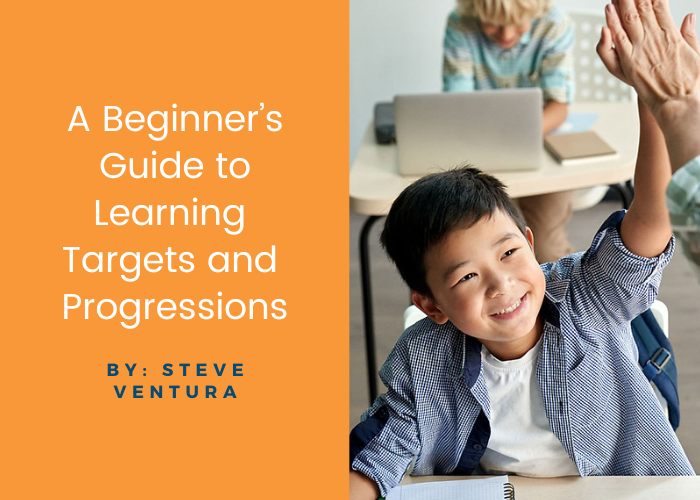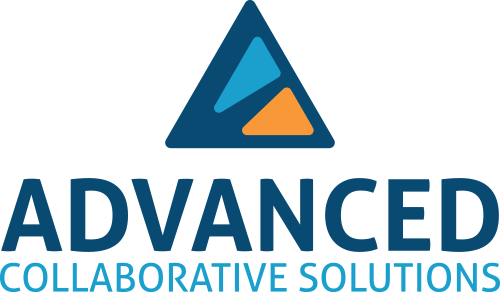A Beginner’s Guide to Learning Targets and Progressions

By: Steve Ventura
After two years of disrupted learning, students are feeling the impact on their academic performance. Even more concerning is the fact that existing inequitable achievement gaps between students of higher and lower socioeconomic status or between white students and students of color have widened over the course of the pandemic. With nearly 50 million K-12 students returning to school this fall in the United States, educators expect a wide array of needs, gaps, and differences to show up in their classrooms. Further, it is typical in the US for students in the same district, school, grade level, or even classroom to achieve at starkly different levels.
Enter “learning targets” and “learning progressions.” At Advanced Collaborative Solutions, we have designed tools and clearly articulated strategies that schools can use to ensure successful teaching and learning.
Level-Setting on Learning Targets
Learning targets go by many names – standards, priority standards, power standards. At ACS, the focus is on essential learning targets, meaning a subset of skills and concepts that teams of educators collaboratively identify as being most important for students to master. A huge challenge for educators today is navigating the seemingly endless list of learning targets they are expected to cover in one school year. Flying through standards leads to superficial understanding at best. By prioritizing the most essential learning targets, teachers cover content with depth and clarity and better set their students up for success in subsequent years. How can you identify essential learning targets in your content area? Alongside your colleagues, consider the following criteria:
- Endurance - which targets reflect learning that students will need and use beyond a single year of school? Speaking and listening skills will certainly fall into this category.
- Leverage - which targets support interdisciplinary connections between content areas? Writing standards are generally a good example of this.
- Readiness - what prerequisite skills do students need in order to be successful in the following course or grade level?
By working collaboratively to develop learning targets with your team, you hone your instructional focus and align your instruction with assessments. With a high level of teacher clarity, instruction and student achievement both improve drastically. However, it’s one thing to know your learning targets and a completely different thing to know how to get all students to reach them. That’s where learning progressions come in.
Learning Progressions - Like Learning to Ride a Bike
Do you remember learning to ride a bike? The memory is most likely etched in your brain forever, and maybe not for good reasons. Many of us did not have training wheels or even adult supervision. Needless to say, we were unsuccessful. It may have taken time, but we figured it out. We may have found success sooner with a different approach. Perhaps we could have started with a tricycle, moved onto a balance bike with no pedals and feet on the ground, transitioned to a bike with training wheels, and finally graduated to a two-wheeler. The fact is that children learn differently and may respond to different teaching methods than others.
This bike-riding process is likened to the concept of learning progressions. Learning progressions help educators diagnose that “Goldilocks” spot for each student in their journey as they tackle an essential learning target. In the Achievement Teams framework, educators plan for clarity by co-developing learning progressions and short-cycle formative assessments (more to come on these in a future blog post) as a first critical step. Essentially, in creating a learning progression aligned to an essential learning target, teachers sequentially and clearly map out the knowledge and skills they expect students to gradually master over time in pursuit of more complex and expert understanding. But how?
Creating Effective Learning Progressions to See Students Soar
Take the following steps with your team and try creating your own learning progression.
Select one essential learning target to focus on.
- List all of the skills (verbs) that students need to do and all of the concepts (nouns) that students need to know to achieve the learning target.
- Sequence these skills and concepts from simple to complex instruction (use Webb’s Depth of Knowledge tool to support).
- Pinpoint words or phrases within the learning target you will need to define for students. This will identify prerequisite skills students need.
Want to dig deeper? Check out our archived webinar on Learning Progressions and Success Criteria.
Teams who have mastered learning progressions and have woven them into the fabric of their instructional practice consistently see huge benefits. Instruction is better aligned to assessments, every student gets the opportunity to move from lower- to upper-level cognitive skills, and teachers can identify appropriate starting points when launching new content. Eventually, teachers can involve students in the learning progression process by clearly articulating to students where they are and where they need to go in a progression, which allows students to own their learning.
Start Achieving With Your Team
If the prospect of gaining teacher clarity and improving student outcomes interests you, snag your copy of our new book Achievement Teams: How a Better Approach to PLCs Can Improve Student Outcomes and Teacher Efficacy and start forming your own Achievement Teams today!

